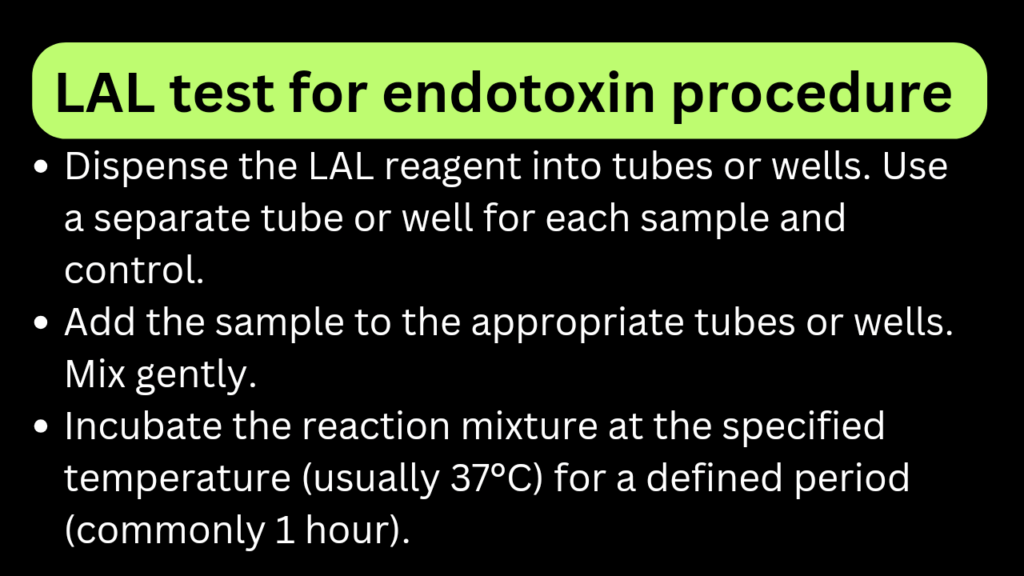LAL test or Limulus Amebocyte Lysate is widely used to detect the presence of bacterial endotoxins. Endotoxins are found in the cell walls of gram-negative bacteria.

Method and Materials for lal test in microbiology
- LAL Reagent: Limulus Amebocyte Lysate reagent,
- Control Standard Endotoxin (CSE): A known concentration of endotoxin used as a positive control.
- Sample: Sample to be tested.
- Test Tubes or Microplates: To conduct the reactions.
- Water Bath or Incubator: To control the temperature during the test.
- Spectrophotometer or other measuring instrument: To measure the reaction.
Lal test procedure
Preparation
- Pre-warm the LAL reagent: If required, warm the LAL reagent to the specified temperature (usually 37°C) using a water bath.
- Prepare the Sample:
- If the sample is in solid form, dissolve it in a suitable solvent.
- Ensure the sample is within the specified pH range for the LAL reagent.
Controls
- Positive Control:
- Prepare a series of tubes or wells with known concentrations of Control Standard Endotoxin (CSE). This serves as a positive control to validate the sensitivity of the LAL reagent.
- Negative Control:
- Include a tube or well with LAL reagent and no endotoxin as a negative control.
Reaction Setup
- Add LAL Reagen: Dispense the LAL reagent into tubes or wells. Use a separate tube or well for each sample and control.
- Add Sample: Add the sample to the appropriate tubes or wells. Mix gently.
- Incubation: Incubate the reaction mixture at the specified temperature (usually 37°C) for a defined period (commonly 1 hour).
Lal test Result
After incubation, observe for gel formation, color change, or other indications of a positive reaction.
NOTE: Measure the reaction using a spectrophotometer. The degree of reaction is proportional to the concentration of endotoxin.